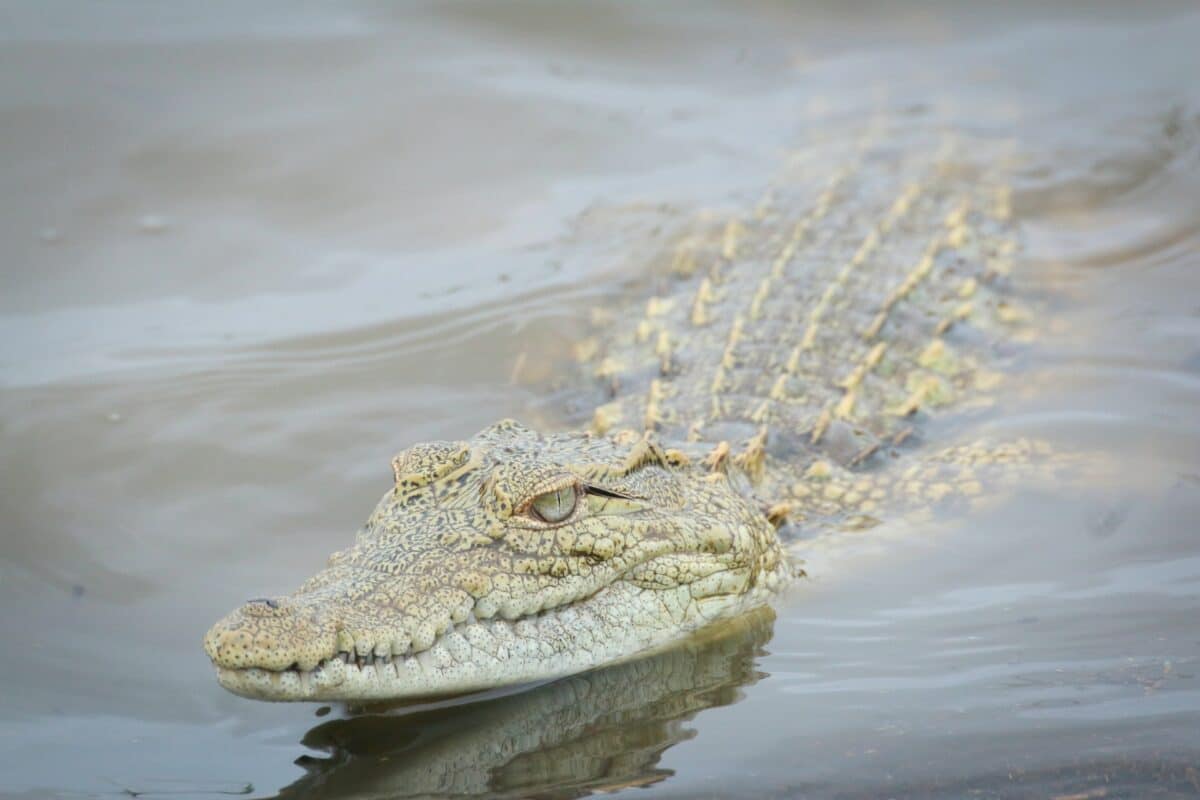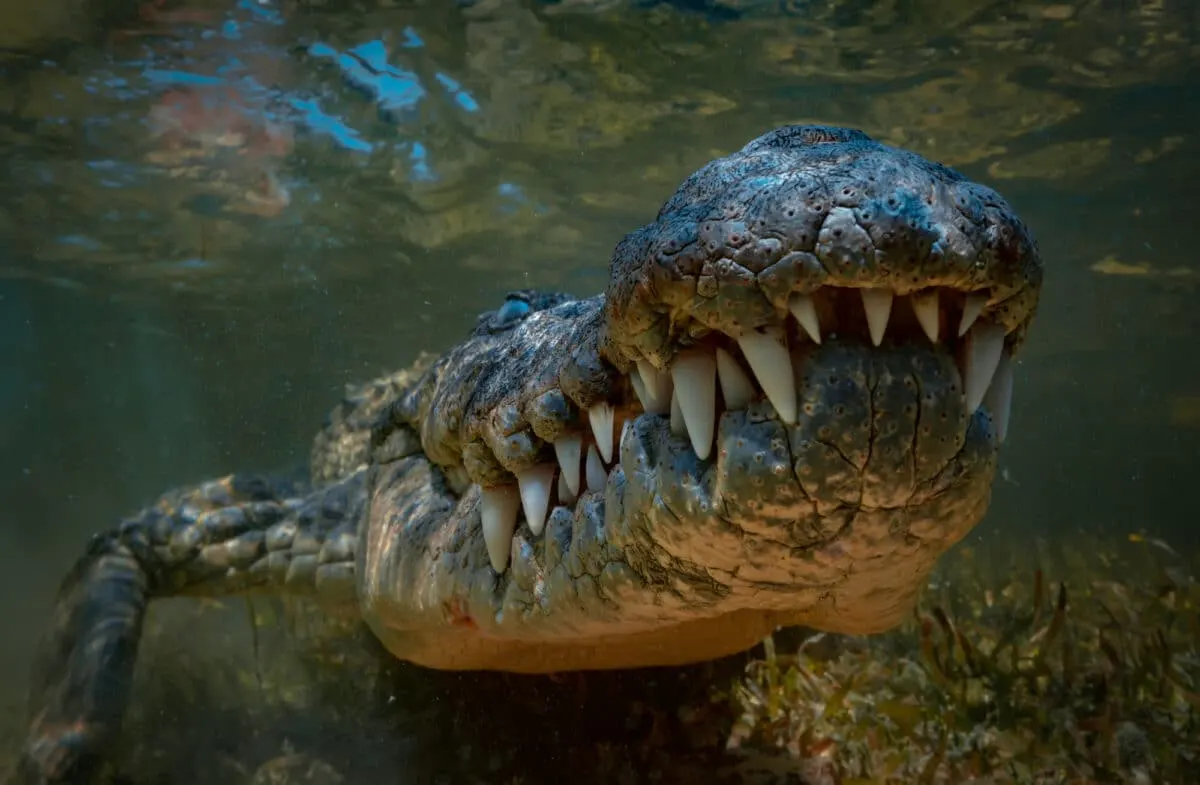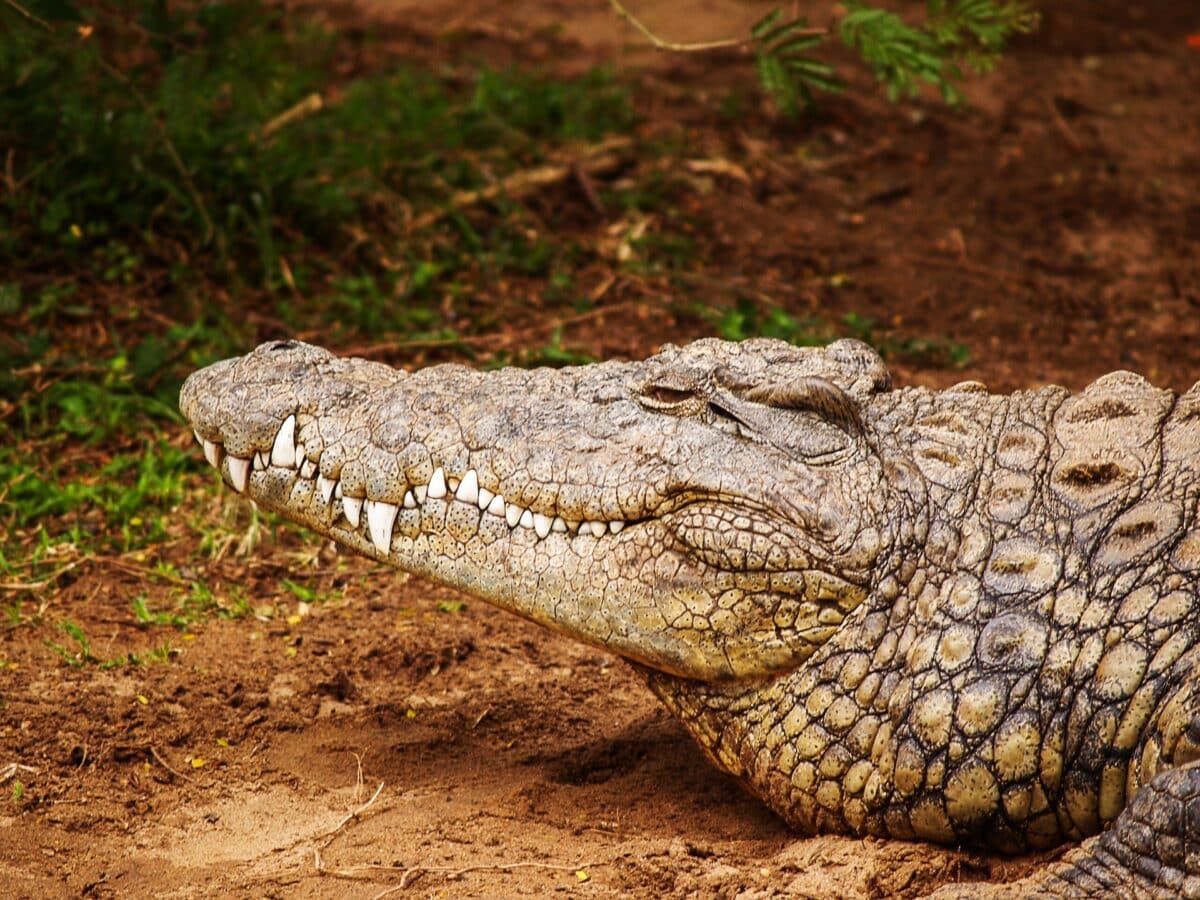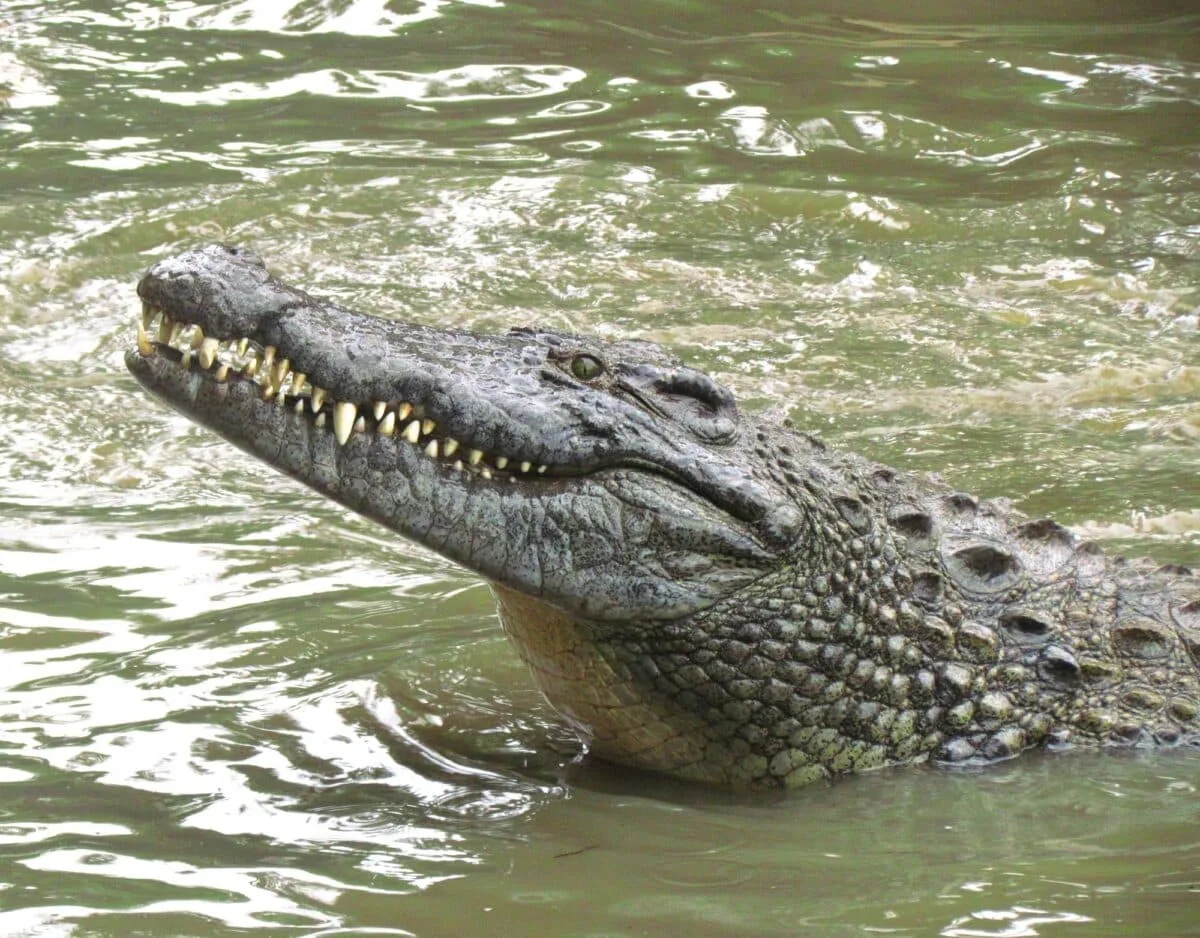The Most Powerful Bite Force In the Animal Kingdom
The Saltwater Crocodile is the most powerful biter among all apex predators in the animal kingdom. With a bite force exceeding 3,700 pounds per square inch, it surpasses that of any land animal. In this article, we will delve into the world of this remarkable reptile and explore its impressive capabilities as a predator, its habitat and behavior, and ongoing conservation efforts to ensure its survival for future generations. Get ready to learn about one of nature’s most captivating creatures!

Main points
- The saltwater crocodile has the most powerful bite force among all animals, exerting more than 3,700 pounds per square inch (psi).
- Its jaws are long and robust, containing up to seventy sharp teeth that can tear flesh easily.
- Compared to other formidable predators such as lions and hippos, the saltwater crocodile’s bite force is much stronger.
- With its immense bite force, the crocodile can quickly kill prey that is much larger than itself in just one bite.
- The saltwater crocodile uses a stealthy hunting technique by submerging itself beneath the water’s surface and executing the “death roll” maneuver to overpower larger prey.
Table of Contents
- Introduction
- Key points
- Conclusion
Presenting the Mighty Saltwater Crocodile
 The saltwater crocodile is a remarkable and fearsome creature that commands admiration wherever it goes. As one of the biggest and most dominant predators on Earth, the saltwater crocodile is a true conqueror of its natural habitat, which includes rivers, estuaries, wetlands of Southeast Asia, Australia, and some Pacific Islands.
The saltwater crocodile is a remarkable and fearsome creature that commands admiration wherever it goes. As one of the biggest and most dominant predators on Earth, the saltwater crocodile is a true conqueror of its natural habitat, which includes rivers, estuaries, wetlands of Southeast Asia, Australia, and some Pacific Islands.
Thanks to its exceptional physiology that enables it to swim rapidly, hunt strategically, and withstand harsh environments, the saltwater crocodile is genuinely awe-inspiring. In this article, we will delve into the crucial characteristics and adaptations that make the saltwater crocodile so intimidating while also discussing the obstacles it faces in the contemporary world.
Encounter the World’s Largest Crocodile.
A Summary of Its Characteristics
The Bite Force of the Saltwater Crocodile

The saltwater crocodile is a massive and formidable predator that can measure up to 23 feet in length and weigh up to 2,200 pounds. Its diet includes fish, mammals, birds, reptiles, and more. This species inhabits rivers, estuaries, and wetlands in Southeast Asia, Australia, and the Pacific Islands.
One of the most impressive features of the saltwater crocodile is its bite force, which exceeds 3,700 pounds per square inch (psi). This makes it the animal with the most powerful bite in the world. The crocodile’s anatomy plays a crucial role in producing such an immense biting power, thanks to its incredibly long and powerful jaws and strong muscles that make up over a third of its total body weight.
To put it into perspective, other powerful biters in the animal kingdom like lions and hippos cannot match the saltwater crocodile’s bite force. Lions can only produce around 600 psi, while a hippo’s bite force is estimated at around 1,800 psi. In contrast, the saltwater crocodile’s bite can penetrate almost anything. Despite their aggressive behavior and powerful jaws, saltwater crocodiles are classified as “Least Concern” on the IUCN Red List and can live up to 70 years in the wild.
The strength of a saltwater crocodile’s bite force is highlighted by comparing it to the bite forces of other animals. With a bite force of 3,700 psi, the crocodile can easily catch and kill prey much larger than itself with a single bite. Its powerful jaws and teeth make it an efficient hunter capable of crushing bones and breaking down tough hides. This versatility allows the saltwater crocodile to hunt various types of prey as an apex predator in the wild.
Techniques Used for Hunting and Feeding

The Saltwater crocodile’s exceptional bite force is its primary weapon as an apex predator. With one bite, it can seize and crush even large prey like water buffalos and sharks. Its camouflaged body aids in catching unsuspecting targets as it stealthily lurks underwater with only its eyes and nostrils exposed.
The Saltwater Crocodile is adaptable to various habitats like rivers, estuaries, and coastal areas, making its diet diverse. When hunting larger prey, it employs the “death roll” technique where it rapidly twists its body using its powerful tail to disorient and tear apart captured prey.
Witness the Animal with the Strongest Bite Force in Its Natural Habitat

Experience the awe-inspiring beauty of saltwater crocodiles in their natural environment, where they can grow up to 23 feet long and weigh over a ton, making them one of the largest reptiles on Earth. With their sharp teeth and powerful jaws, these crocodiles are a truly remarkable sight.
As apex predators, saltwater crocodiles play a crucial role in regulating their ecosystem’s balance. You can get up close and personal with these creatures through guided tours or visiting national parks where they reside, but it’s vital to maintain a safe distance and respect their power.
Discover the best places to witness these magnificent creatures in their natural habitat.
Before Visiting Saltwater Crocodiles: What You Need to Know

Planning a trip to see saltwater crocodiles is an exciting prospect for wildlife enthusiasts, but it’s essential to be aware of safety considerations before embarking on such an adventure. Understanding the habitat and behavior of these predators is crucial, as they are most active during specific times of the day and can be unpredictable and territorial.
Taking appropriate safety precautions, such as keeping a safe distance from the animals, adhering to designated viewing areas, and following instructions from experienced guides or park staff, is paramount. When choosing a tour company, prioritize those that prioritize safety and conservation and have a good track record of adhering to ethical guidelines. Additionally, ensure that crocodile viewing is legal and permitted in the chosen areas.
Tips for Staying Safe Around Saltwater Crocodiles
Encounters with saltwater crocodiles can be dangerous, so it’s important to approach them with caution. Follow these tips to stay safe:
- Be aware of your surroundings: Assess the area for danger before entering any body of water in a saltwater crocodile’s natural habitat. Look for warning signs and stay away if the area is known to have crocodiles.
- Keep a safe distance: Never approach a saltwater crocodile, even if it seems calm. Stay at least 30 to 50 feet away from the creature.
- Avoid entering the water: Swimming or boating in areas inhabited by saltwater crocodiles is extremely risky. Use an alternative route to cross a body of water.
- Do not provoke the animal: Don’t disturb a saltwater crocodile, intentionally or unintentionally. Respect the animal’s space and let it be.
- Stay vigilant: Saltwater crocodiles are experts at blending into their environment. Remain mindful of your surroundings as they may be present.
- Seek medical attention if attacked: Crocodile attacks can cause severe injuries or death, so seek medical attention immediately.
Protecting Saltwater Crocodiles through Conservation Efforts
Although the saltwater crocodile is classified as a species of “Least Concern” on the IUCN Red List, local populations have been declining due to human activity. To protect these magnificent animals, conservation efforts are being implemented. The preservation and restoration of habitats are critical priorities to safeguard ecosystems. Organizations are working towards protecting saltwater crocodile habitats from destruction and restoring damaged areas.
In addition, stricter laws and penalties against poaching and illegal hunting have been put in place to discourage this practice. Educational campaigns that emphasize the importance of saltwater crocodiles and their role in the ecosystem have also been launched to raise awareness and support for conservation efforts.
These conservation efforts provide hope for the future of saltwater crocodiles, ensuring their survival for generations to come.
Conclusion: Saltwater Crocodile’s Mighty Bite

The saltwater crocodile is a majestic and fearsome predator, possessing the strongest bite force of any living land animal. By understanding their habitat and behavior, we can help conserve this powerful creature for future generations to appreciate. Appreciating the saltwater crocodile’s strength and role in our ecosystem can gain us respect for one of nature’s top predators.